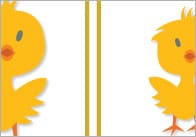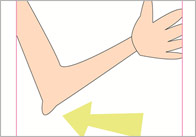The difference between sharing a story and reading a story

Picture the scene: I am in a preschool book area. I am reading The Hungry Caterpillar, by Eric Carle. Thomas walks in.
Me (To Thomas): Let’s share a book.
Thomas: I hate sharing!
Me: Do you want to look at the book on your own?
Thomas: No. Can we look at it together?
Me: Oh, I see. Shall we read a book together?
Thomas: I can’t read!
Exit Thomas.
What went wrong?
It’s the phrase ‘share a book’. To Thomas, ‘share’ means ‘to give over what you have got to someone else, so they can join in with what you have. If it’s food, then ‘share’ means ‘give another person some of what you have, so they can eat it.’ No wonder he said, “I don’t like sharing!”
Then there’s the word ‘read’. When I say ‘read together’, I mean ‘have fun: with me reading the words and us talking about the pictures and the story and having a laugh about the caterpillar’. What Thomas hears is, ‘Michael will read and Thomas will read.’
Thomas hasn’t got a language problem, yet when I say, ‘let’s share a book’ to other children, they usually join in and we have a great time. They don’t react like Thomas.
So what is the problem? I watched the staff interact with the children with books. In all cases the adult helped the children choose a story book, and then sat with one child. The adult held the book, the child listened to the adult read, and they talked about the pictures and story as they went along. Adult and child were very happy. So what’s Thomas’ big problem?
Then a light bulb came on above my head, as I remembered a great talk I went to, where Emma Nicolls described her study of children who seemed on the road to failure to read. Here were her key messages about sharing books:
– Have some fiction and non-fiction books available. Many children prefer non-fiction to stories. A good quality photo book is much easier to talk about than a story: you can open the book at a favourite page, and the child will start talking!
– Let the child choose the book. They will enjoy it more. Or together choose two or three books and let the child choose which one to look at first.
– Give the child the book to hold! As soon as you do that, the ‘power’ has shifted to the child. He really is in charge!
– If he wants you to hold the book, ask him, ‘Shall I read, or shall we talk about the pictures?’
– If you have negotiated these actions, then you must stick to them! Don’t start pointing out words that look the same and getting the child to sound out words. That is reading practice.
So I got a non-fiction photo book about minibeasts, The Hungry Caterpillar and some small minibeast toys. I know that Thomas likes anything to do with minibeasts.
Now picture the scene again:
Me: Hi Thomas. Do you want to look at these books and play with these toys?
Thomas: Yes please. Can Ben and Tala come too?
Me: Great idea!
(All three arrive. Tala is Thomas’ cousin and Ben is his big mate. They are inseparable).
Thomas: Let’s play with these creepy crawlies! (As they play I put the non-fiction book on the floor where they can see it.) Wow!! Look at this tarantula! (Thomas is an expert on spiders). The children look at the book and play and talk to each other.
Tala: Have you got any more creepy crawly books?
Me: I’ve got The Hungry Caterpillar.
All: Yay!!
Me(Giving the book to Thomas: Do you want to hold the book, or shall I?
Thomas: No. You have it.
Me: Shall we talk about the pictures, or shall I read it?
Thomas: You read it please.
(They sit on the floor and I sit on a small chair and read the story.)
When we finish I ask the children about the non-fiction book.
Me: Can you each choose a favourite page and tell me about it?
And that’s what happened.
Thomas is a bit of an ‘I prefer books about facts with nice photos to talk about’ boy. He needs to talk about the pictures and tell you what he knows, and to ask you questions. This is what ‘sharing a book’ really means. If you want to get all the children in your class involved in books, then all the staff need to be clear about what ‘sharing a book’ looks like, as opposed to ‘reading a story’ and ‘practicing reading.’
Practice using the right terms for the different activities, have a range of fiction and non-fiction books in your book area, and make time to be in the area. This is the start to getting all children positive about reading.
Thank you Thomas. Thank you Emma. For more details about Emma Nicolls’ research visit www.talk4meaning.co.uk
Photo: Smarteez Neighbourhood Nursery, Bedford
Michael Jones is a freelance trainer in young children’s communication. He led the Every Child a Talker project in three different boroughs. He has written widely on the subject of young children’s language and learning, and is co author of ‘Let’s get talking!’ and ‘Supporting quiet children’, both published by Lawrence Educational. To find out more about Michael’s work visit //www.talk4meaning.co.uk/.
Popular Teaching Resources
Stay Up To Date
Sign up for our newsletter and we’ll let you know when we create new early years resources.





